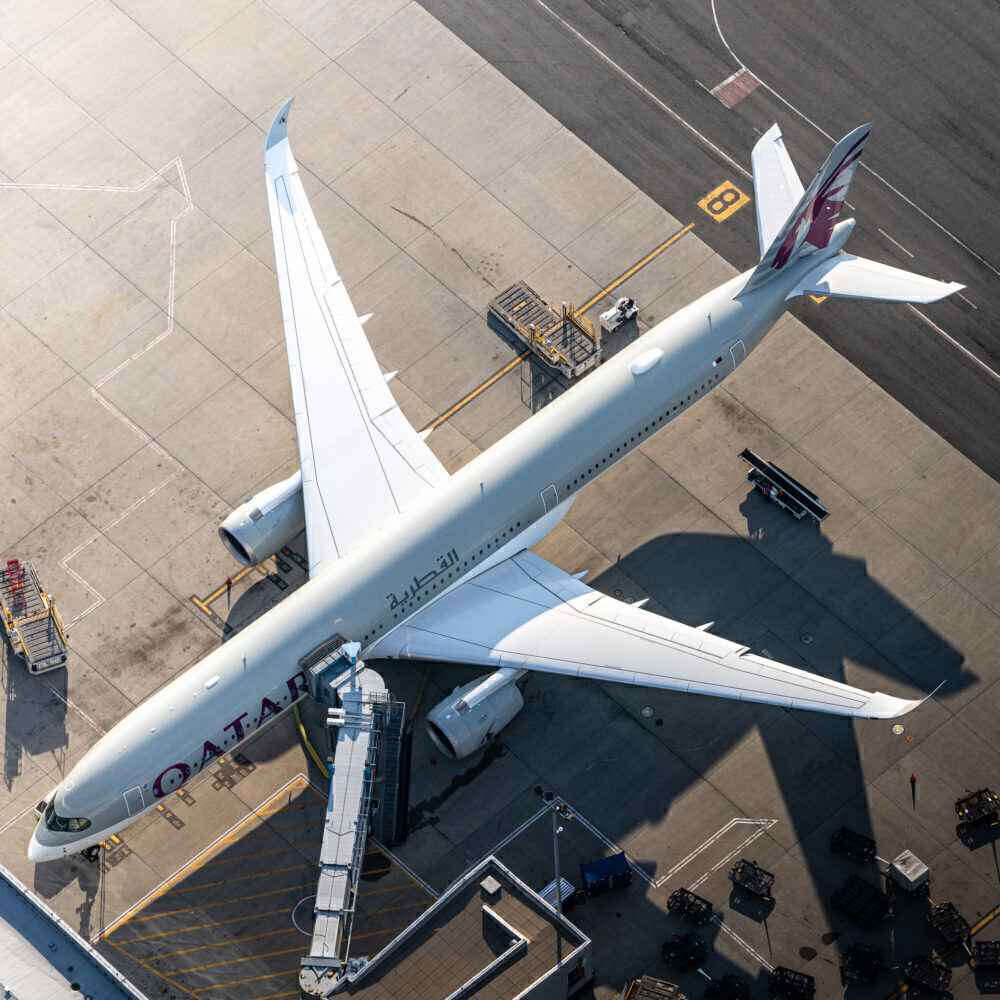It’s only been seven years since Qatar Airways first took on the Airbus A380, but the airline already feels that the aircraft is a thing of history. Significant changes in the aviation industry and wider society have forced the flag carrier of Qatar to ground all its superjumbos for the long term, and the type’s future remains in question. Simple Flying recently had the chance to speak with the airline’s chief commercial officer, Thierry Antinori, about the plane’s presence in the company’s fleet.

Another solution
Altogether, Antinori firmly believes in the abilities of a newer Airbus widebody – the A350. He highlights that this plane is much more suited to the modern climate and also adheres to the company’s wider missions to cut costs and reduce emissions.
The executive adds that he feels it was a questionable move for competitors to be stubborn with their A380 fleets. Soon after the rise of the pandemic, Qatar Airways quickly shared that it won’t fly the superjumbo again until at least late 2022. Then, at the turn of the year, the carrier confirmed that half of its A380 fleet won’t fly again.
“The A380 today has emissions that are 80% more than the A350. The A350 is also a strong-seater aircraft, especially with the -1000. The A350 of Qatar Airways has an average age of 2.5 years and the -1000 is less than one year of age. So, you have a state-of-the-art product and state-of-the-art cabin. Also, you transport the same numbers of passengers on the A380, because the A380 can’t be full today. Having a capacity of the A350 is enough to capture the flows and you do that with the most modern aircraft. You have the most modern cabin with a lot less pollution,” Antinori told Simple Flying.
“The A380 is a great product, it’s a nice cabin, but it’s just the past. You have to look at the new way of travel, the sustainability factors, and what the people want.”

A considerable difference
The airline has been vocal about its goals to advance sustainability initiatives. This is an aspect that the wider industry is trying to focus on across the board, with targets to cut emissions a priority. When it comes to Qatar Airways, part of its environmental mission includes identifying opportunities to reduce aircraft weight and fuel consumption while optimizing the efficiency of flight routes.
Interestingly, benchmark figures showed that the operator’s fleet of A350s consumed 20 tonnes of CO2 less per block hour on certain routes when against the A380. Since identifying this factor, the airline emphasized that flying such a huge plane with a low load factor does not meet its environmental responsibilities or make commercial sense.

Across the industry
Qatar Airways’ stance is not rare in the aviation scene. For instance, the likes of Air France brought forward the retirement of the A380, while numerous other operators are planning their phaseout schedule. Even Airbus itself is soon ending production, less than two decades after the aircraft’s introduction.
Notably, Middle Eastern counterpart Emirates is a significant fan of the A380. The carrier currently holds 117 superjumbos, but 101 units are currently parked.
Despite the storing of the planes, Emirates has been taking on recent additions. It feels that certain airlines were not utilizing the A380 the way they should, with far too few of numbers in their holdings. The Dubai-based outfit’s president, Sir Tim Clark claims that if an airline only has a handful, the costs go through the roof, but if there are a hundred of them the unit costs in operating a lot lower.
Stay informed: Sign up for our daily and weekly aviation news digests.
Regardless of these factors, the global health crisis has caused a massive transformation in the aviation industry. Long-haul routes remain rocked a year after the pandemic was declared, and many routes will continue to be affected throughout the year and beyond. Airlines, including Qatar, predict that the market won’t reach 2019 numbers until approximately 2023 or 2024. By then, the whole scene would have shifted even more.
Therefore, Qatar Airways has reaffirmed its trust in the A350, deploying it well on existing and new routes across the continents. The airline has been expanding well across North America, with destinations such as San Fransisco seeing A350 flights. Notably, passengers will be appreciating the famous QSuite business class on these services, something that the carrier’s A380s don’t hold.

The right arsenal
Even though the type is viewed as a thing of the past, Qatar Airways’ A380s are still relatively new. According to Planespotters.net, the first unit arrived in Doha in September 2014. Moreover, the last delivery was just in April 2018. However, the industry rapidly transitioned from the time orders were placed and through to the end of the last decade. Altogether, Qatar’s other passenger widebodies, the Boeing 777, 787 Dreamliner, and A350 XWB, are more effective options for the airline in the modern age.

So, even though Qatar Airways has fallen out of favor with the A380, it undoubtedly has a lot of love for Airbus’ other ambitious widebody, the A350. This twinjet is primed to dominate the long-haul market for the European manufacturer in the decade ahead, with its great balance of size, capacity, costs, and passenger experience.
It’s sad to see the A380 struggle to find a long-term presence in the modern climate. Airbus is already wrapping up production before the 15th anniversary of the plane’s introduction anniversary. Nonetheless, the company will be glad that it has another long-haul powerhouse that is consistently popular across the industry.
What are your thoughts about the future of the Airbus A380? Did you ever get to fly on any of Qatar Airways’ units before they were grounded? Let us know what you think of the aircraft and the carrier’s plans in the comment section.
[ad_2]
Source link


